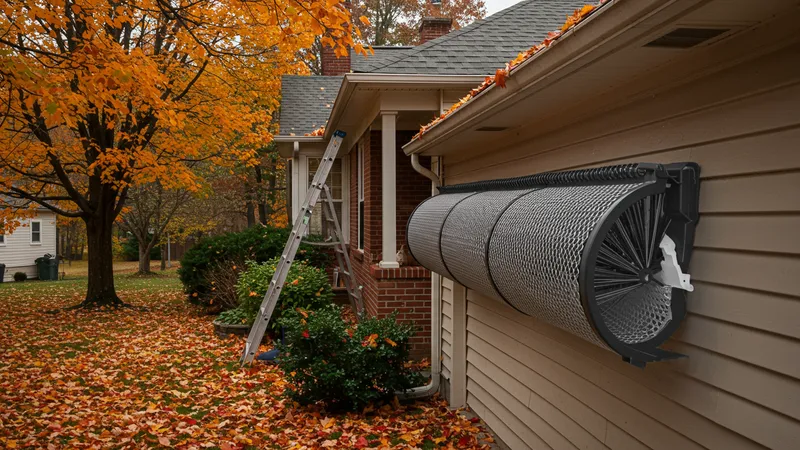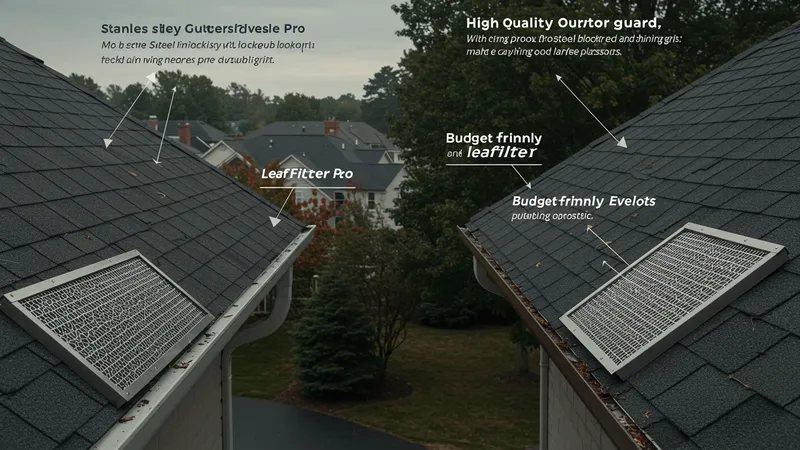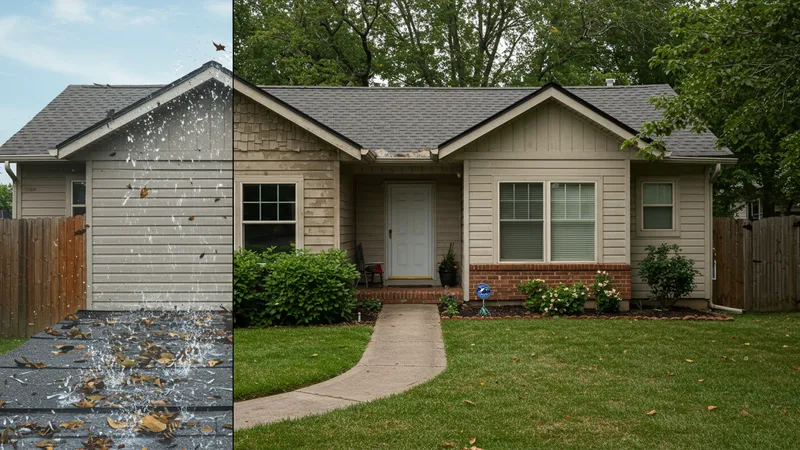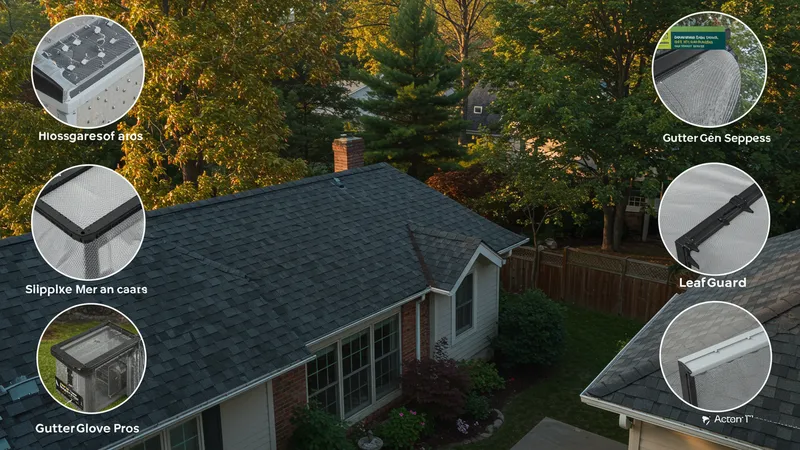

Imagine scaling a ladder every autumn, bracing yourself for a routine that never seems to end—clearing countless leaves and debris from overflowing gutters. Beyond the hassle, unchecked gutters can cause expensive property damage, from flooded basements to rotted siding. That’s where dedicated gutter guard systems come in. These devices are engineered to block debris, guide water safely away, and drastically reduce the need for frequent cleaning. Selecting the right system is all about long-term savings: the right choice prevents future repair bills, preserves a building’s foundation, and often pays for itself in avoided maintenance alone.
Gutter guard systems are available in an array of designs, each suited for different climates, roof types, and debris load. The market’s most popular solutions include micromesh covers, reverse curve guards, foam inserts, and brush-style designs. The upfront investment in quality gutter guards may seem substantial, but the savings extend far beyond the purchase price. The best systems dramatically minimize the risks of clogs, overflows, and water-borne damage, delivering real—it’s often surprising—savings over time.

Each featured system on this list tackles the core issue of gutter blockages, but does so with unique mechanisms. For instance, micromesh guards like GutterGlove and LeafFilter filter out even the smallest particles, while bristle designs or foam inserts from GutterBrush and FLO-Free provide a targeted solution for roofs subjected to heavier debris. Homeowners weighing choices should consider the volume and type of leaves near their property, as well as preferences for professional versus DIY installation—these factors heavily influence both upfront costs and long-term value.
The potential savings over years are significant. Water damage resulting from blocked gutters can quickly cascade into foundation issues, landscaping repairs, and interior harm. Studies show that effective guards can save hundreds to thousands annually by preventing such escalating repairs. While an initial professional installation can run higher, the reduced frequency of gutter cleaning—often a twice-yearly necessity—also avoids ongoing labor costs and reduces the risk of accidents for those who typically attempt the chore themselves.
Comparing different systems, it becomes clear that the “right” gutter guard often depends on a household’s particular needs. Properties surrounded by pine needles may benefit from ultra-fine mesh guards, while homes facing storms with heavy leaf fall may require high-capacity designs. Some systems, like LeafGuard, are built as single-piece solutions for seamless functionality and minimal maintenance, while others prioritize affordability and ease of DIY installation. Sizing up the short-term versus long-term costs is key to maximizing return on investment.
Ultimately, choosing a top-rated gutter guard delivers measurable savings by extending gutter lifespans and protecting a property’s most vulnerable points. The deeper details reveal even more valuable insights ahead—like maintenance comparisons and the hidden engineering behind these systems—that can help guide any homeowner to the smartest investment.
The most important distinction between high-value gutter guard systems lies in their construction materials, mesh size, and overall durability. Stainless steel micromesh options, such as those from GutterGlove Pro and LeafFilter, are designed to block fine particles, including pine needles and shingle grit. This robust construction translates to a longer lifespan and lower maintenance, making these choices popular among homeowners seeking set-it-and-forget-it protection.

In contrast, budget-friendly systems like Amerimax Home Products Lock-In Gutter Guard and Evelots Mesh Gutter Guard use powder-coated steel or durable plastics. While these keep out larger debris, their mesh openings tend to be wider, potentially letting smaller particles through over time. However, their lower cost makes them an attractive solution for houses not buried under dense trees or heavy pollen exposure.
Design differences also play a pivotal role. LeafGuard, for example, features a one-piece, covered design that channels rainwater while directing leaves over the edge, effectively preventing clogs but requiring professional installation. Meanwhile, solutions such as GutterBrush and FLO-Free offer a more flexible, do-it-yourself approach but may require periodic cleaning to maintain performance, particularly in high-debris climates.
Overall, homes surrounded by deciduous trees benefit most from fine mesh or surface tension systems, which effectively repel both leaves and smaller organic matter. Meanwhile, properties exposed to fewer obstructions might opt for a simpler, washable insert or mesh roll that delivers adequate protection at a lower price point. Understanding these distinctions lays the groundwork for making a savings-driven decision.
Unprotected gutters require frequent cleanings—industry averages show twice annually at a cost ranging between $120 and $250 per session for a single-story home. Over a decade, these recurring chores can add up to thousands spent on labor or equipment. In comparison, the upfront investment for gutter guards like LeafGuard or LeafFilter could start around $1,500 for a typical residence but eliminate nearly all cleaning needs for years to come.

More critically, gutter guard systems safeguard homeowners from far costlier repairs. Water escaping from clogged gutters can lead to foundation erosion, structural rot, or landscaping fixes, with major problems sometimes exceeding $5,000 to restore. Effective guards help prevent these scenarios—serving as both a physical shield and a form of property insurance.
The savings are most substantial for homeowners with tall, large-roofed houses or those surrounded by heavy debris. For such properties, even DIY-focused products like GutterBrush Simple Gutter Guard or FLO-Free provide impressive returns by minimizing the frequency of high-risk, high-cost cleanings. Over time, these savings actually outpace the original investment, especially when measured against repair bills avidly avoided.
Warranties also factor into financial outcomes. Premium products such as LeafFilter and GutterGlove Pro often come with lifetime transferable warranties, ensuring ongoing performance and adding to resale value. Professionally installed systems tend to be costlier but are backed by workmanship guarantees, increasing overall peace of mind alongside measurable savings.
An often overlooked aspect in the savings equation is the regular upkeep required by each type of gutter guard. Stainless steel micromesh products—LeafFilter and GutterGlove Pro included—need the least hands-on attention, owing to their small apertures and robust construction. Except for occasional rinsing in areas with excessive pollen, these guards can last upwards of 20 years without degradation, making them excellent for homeowners prioritizing minimal intervention.

Conversely, DIY-focused solutions such as GutterBrush or foam-based guards like FLO-Free may necessitate some annual removal and cleaning to keep water drainage at maximum efficiency. While these styles offer easy self-installation and lower starting costs, their lifespans typically range from 5–10 years, depending on weather exposure and debris load.
Materials also bear on longevity. For example, powder-coated steel guards (Amerimax) strike a balance between affordability and lifespan, withstanding rust and heavy rainfall while maintaining function for a decade or more. Plastic mesh rolls, as in Evelots Mesh Gutter Guard, are highly economical but generally less durable—best suited to low-debris roofs and temporary protection goals.
Ultimately, focusing on both upfront price and projected maintenance is vital to achieving the most substantial savings. Homeowners willing to invest in long-lasting systems with minimal annual attention often find their initial expense pays dividends through reduced maintenance costs and property protection.
Choosing the most cost-effective gutter guard system means weighing several variables unique to each home. Start by considering roof style, gutter size, and the types of trees present—maple leaves, pine needles, and oak tassels each challenge gutter guards differently. For those in heavily wooded areas, mesh systems like LeafFilter and GutterGlove Pro are often the strongest candidates, keeping even tiny particles from slipping through.

Houses with simple rooflines and sporadic tree litter may find excellent value in Amerimax, FLO-Free, or Evelots Mesh systems, all of which offer low-cost installation and easy maintenance. For unique architectural designs or those desiring a single-piece, worry-free approach, professionally installed options like LeafGuard become attractive despite their higher upfront expense.
It’s also essential to factor in the value of warranties and the reliability of professional installation. Long-term guarantees can translate into significant added savings if problems arise, while DIY-friendly systems save initially but depend more on homeowner diligence for optimal function. The right balance depends on both preference and property needs.
Ultimately, selecting an appropriate gutter guard system is a tailored process, driven by detailed understanding of the specific property and climate. Homeowners who match the right product to their situation enjoy both immediate and prolonged savings, sealing their investment and simplifying maintenance for years to come.